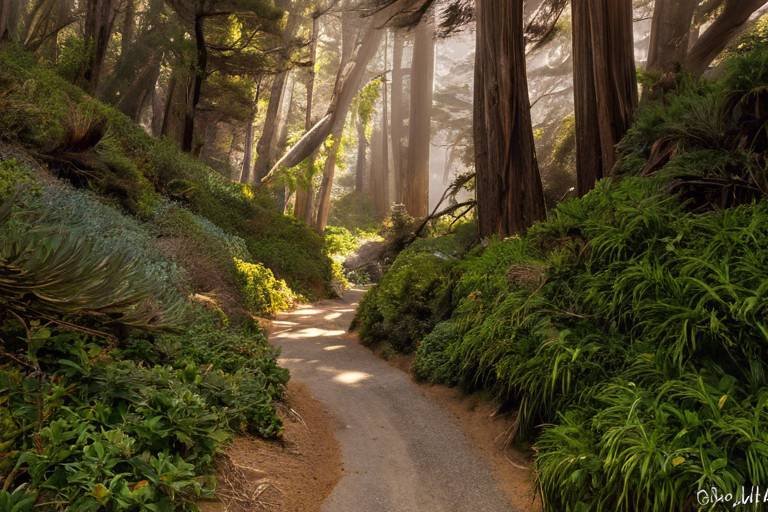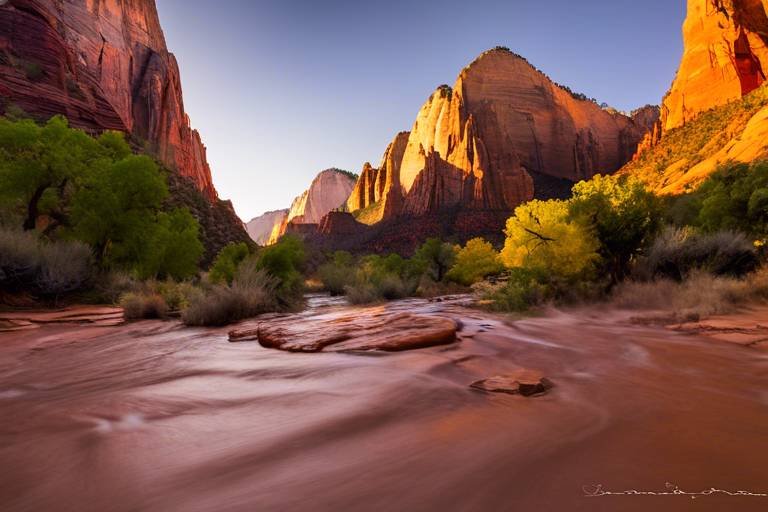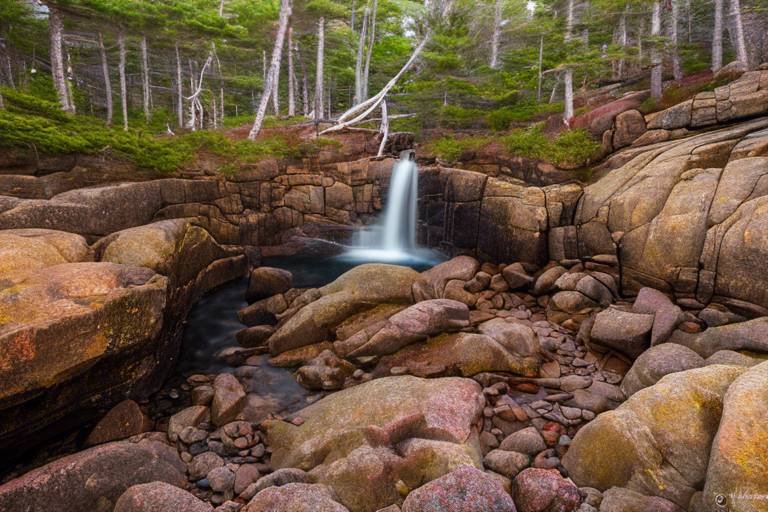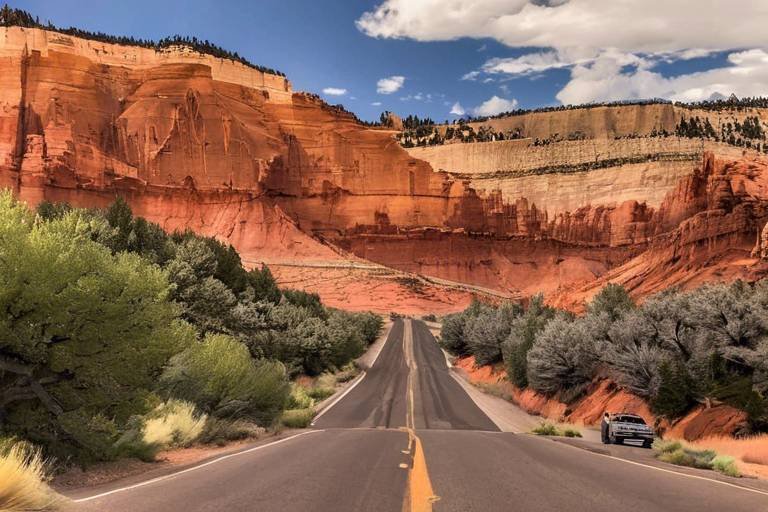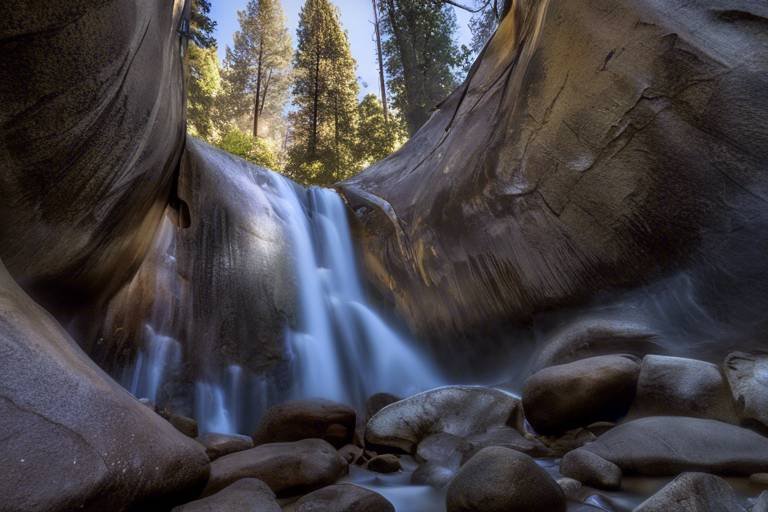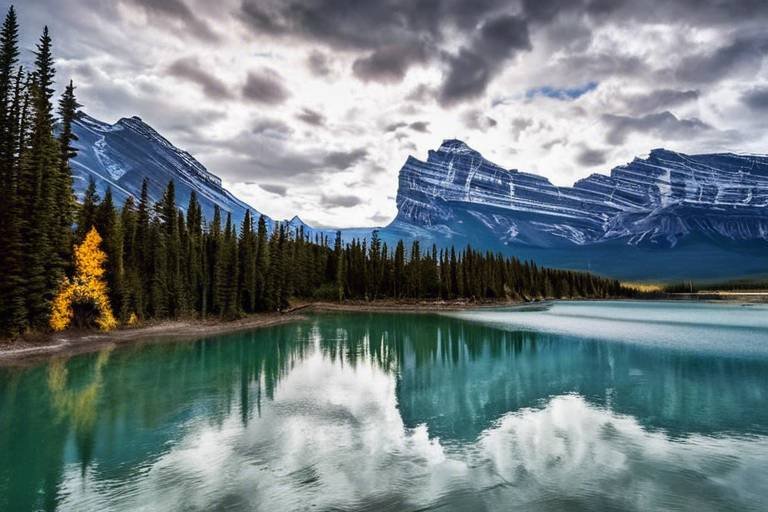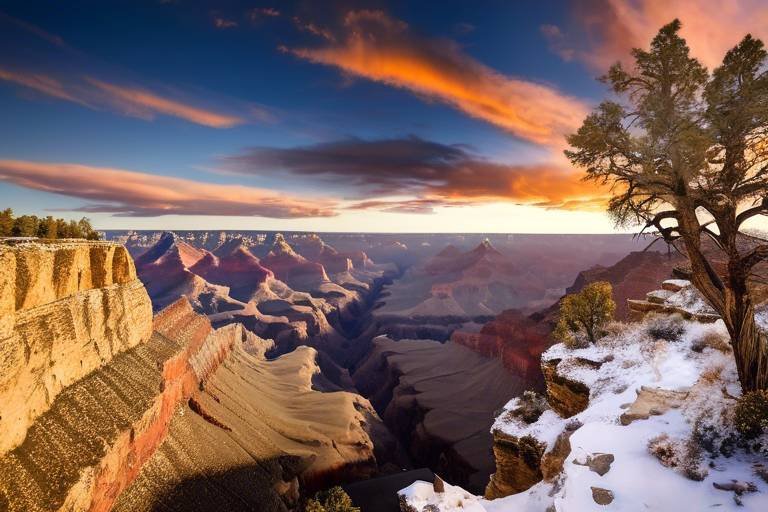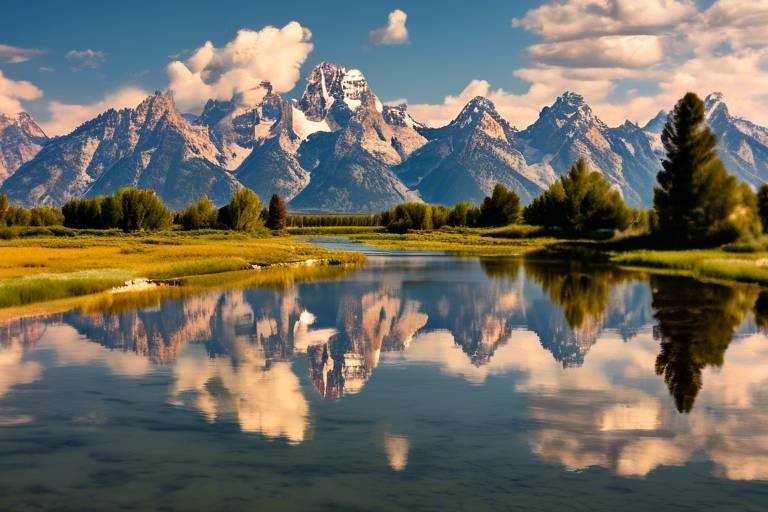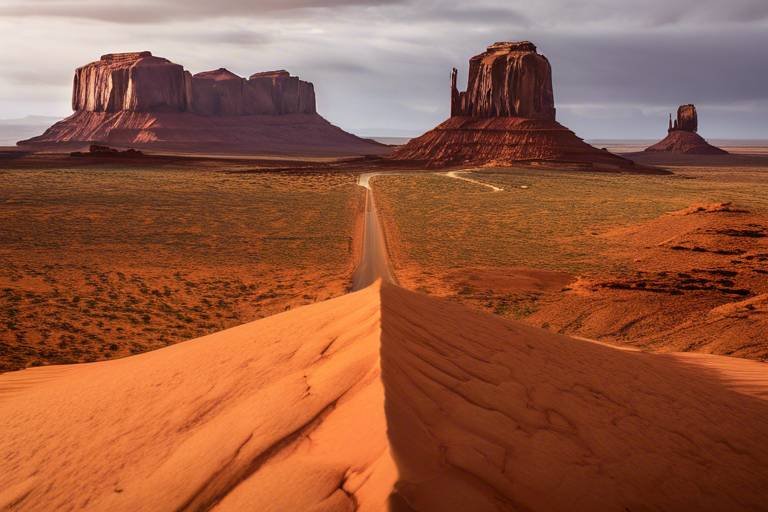The Ultimate Guide to Backpacking in the Grand Canyon
The Grand Canyon, a natural wonder that leaves visitors in awe with its breathtaking beauty and sheer magnitude. Backpacking in this majestic location is a dream for many adventure enthusiasts, offering a unique opportunity to immerse oneself in the grandeur of nature. From planning your trip to navigating the trails and staying safe in the wilderness, this ultimate guide will equip you with the essential information and tips for an unforgettable backpacking experience in the Grand Canyon.
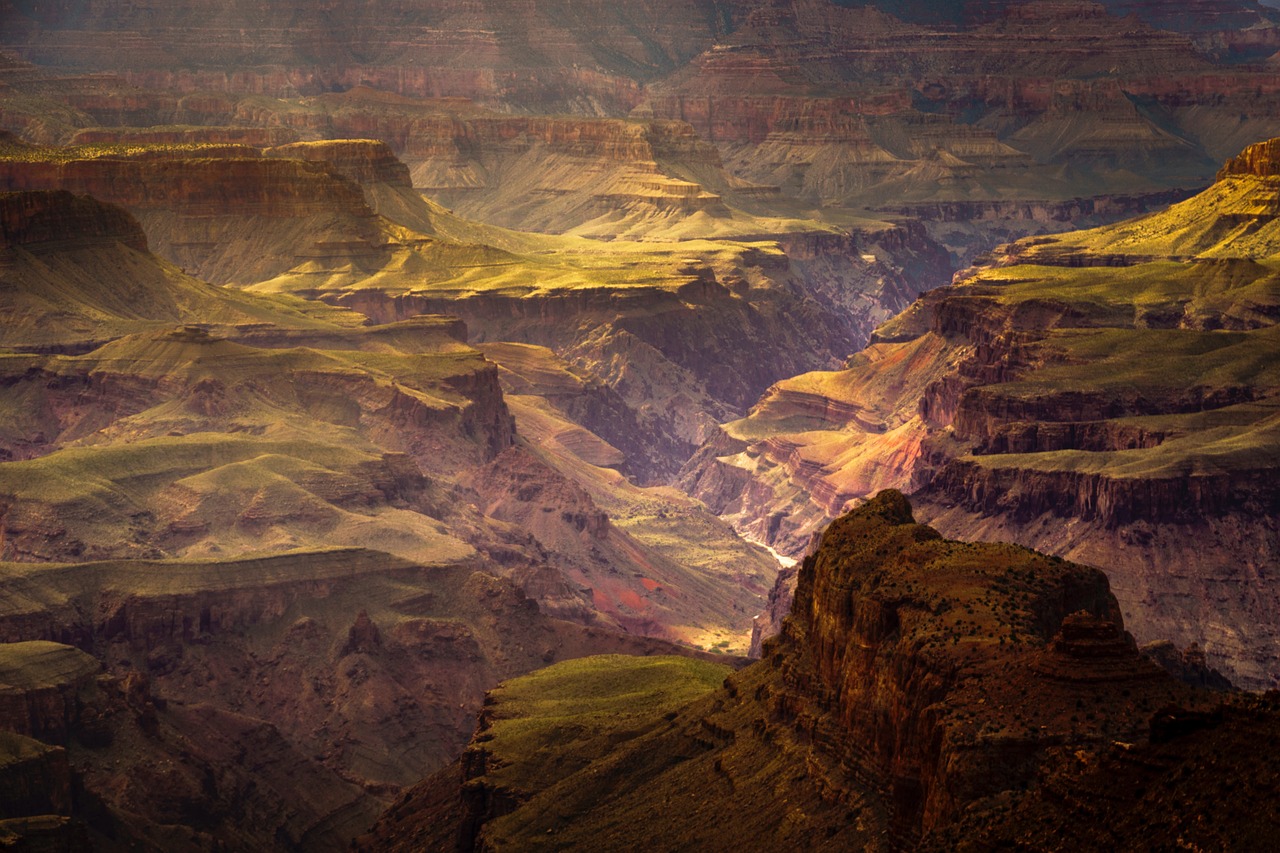
Planning Your Trip
Explore essential information and tips for an unforgettable backpacking experience in the majestic Grand Canyon.
When planning your backpacking adventure in the Grand Canyon, there are several crucial factors to consider for a successful and enjoyable experience. Firstly, obtaining the necessary permits is vital to ensure compliance with park regulations and to secure your spot on the trails. Research the various trail options available, such as the iconic Bright Angel Trail or the challenging Rim-to-Rim trek, to find the best fit for your skill level and preferences.
Additionally, take into account the ever-changing weather conditions in the Grand Canyon. Be prepared for extreme heat in the summer months and potential snowfall in the winter. Packing the right gear, including sturdy hiking boots, a reliable tent, and lightweight but nutritious food, is essential for a comfortable journey through the canyon.
Discovering the optimal seasons for backpacking in the Grand Canyon can significantly enhance your overall experience. Spring and fall are considered the best times to visit, offering mild temperatures, blooming flora, and fewer crowds. These seasons provide ideal hiking conditions and breathtaking views of the canyon's natural beauty.
On the other hand, summer brings scorching temperatures and increased crowds to the Grand Canyon. However, the longer daylight hours during this season allow for extended hikes and exploration of the canyon's wonders. Winter, while less popular due to colder weather, can provide a unique and peaceful backpacking experience for those willing to brave the elements.
Spring and fall are prime seasons for backpacking in the Grand Canyon due to their pleasant weather conditions and lower visitor numbers. The moderate temperatures make hiking more comfortable, and the blooming wildflowers add a colorful touch to the landscape. With fewer crowds, you can enjoy a more serene and immersive experience in this natural wonder.
Although summer in the Grand Canyon brings intense heat and crowded trails, it also offers extended daylight hours for adventurous hikers. By starting early in the morning and taking breaks during the hottest parts of the day, you can make the most of your summer backpacking trip. Be sure to stay hydrated and protect yourself from the sun's rays to prevent heat-related illnesses.
Exploring the diverse trail options in the Grand Canyon is key to customizing your backpacking journey. The Bright Angel Trail, known for its stunning views and water availability, is a popular choice for both novice and experienced hikers. For a more challenging adventure, consider the South Kaibab Trail, which offers panoramic vistas but limited water sources.
If you're seeking a true test of endurance, the Rim-to-Rim trek takes you from one side of the canyon to the other, providing a comprehensive exploration of the Grand Canyon's geological wonders. Whichever trail you choose, be prepared for varying terrain, elevation changes, and awe-inspiring sights along the way.
Ensuring your safety during a backpacking trip in the Grand Canyon is paramount to a successful adventure. Stay hydrated by carrying an ample water supply and replenishing at designated refill stations along the trails. Maintain a balanced diet with lightweight, nutrient-dense snacks to sustain your energy levels throughout the journey.
When encountering wildlife in the canyon, practice caution and respect their natural habitat. Be aware of potential threats from animals like rattlesnakes and scorpions, and take measures to secure your food and belongings to prevent unwanted visits to your campsite. Familiarize yourself with emergency protocols and navigation techniques to handle unexpected situations with confidence.
Proper hydration and nutrition are essential components of a successful backpacking trip in the Grand Canyon. Plan your water consumption carefully, ensuring you have enough to stay hydrated during long hikes. Consider carrying electrolyte supplements to maintain your body's balance and prevent dehydration in the arid desert environment.
For sustenance on the trail, opt for lightweight yet nutrient-rich snacks like trail mix, energy bars, and dried fruits. These portable options provide quick energy boosts and essential nutrients to fuel your body during strenuous hikes. Prioritize foods that are easy to pack, store, and consume while on the move to optimize your backpacking experience.
Sharing the Grand Canyon with its diverse wildlife adds an element of excitement to your backpacking journey. However, it's crucial to understand how to coexist safely with animals like rattlesnakes, scorpions, and various bird species. Minimize risks by properly storing your food in bear-proof containers and choosing campsites away from water sources and animal habitats.
Respect the natural behaviors of wildlife and avoid approaching or feeding them during your hike. Stay alert and vigilant while on the trails, keeping an eye out for any signs of animal activity nearby. By practicing responsible wildlife viewing and camping etiquette, you can enjoy a harmonious coexistence with the creatures that call the Grand Canyon home.
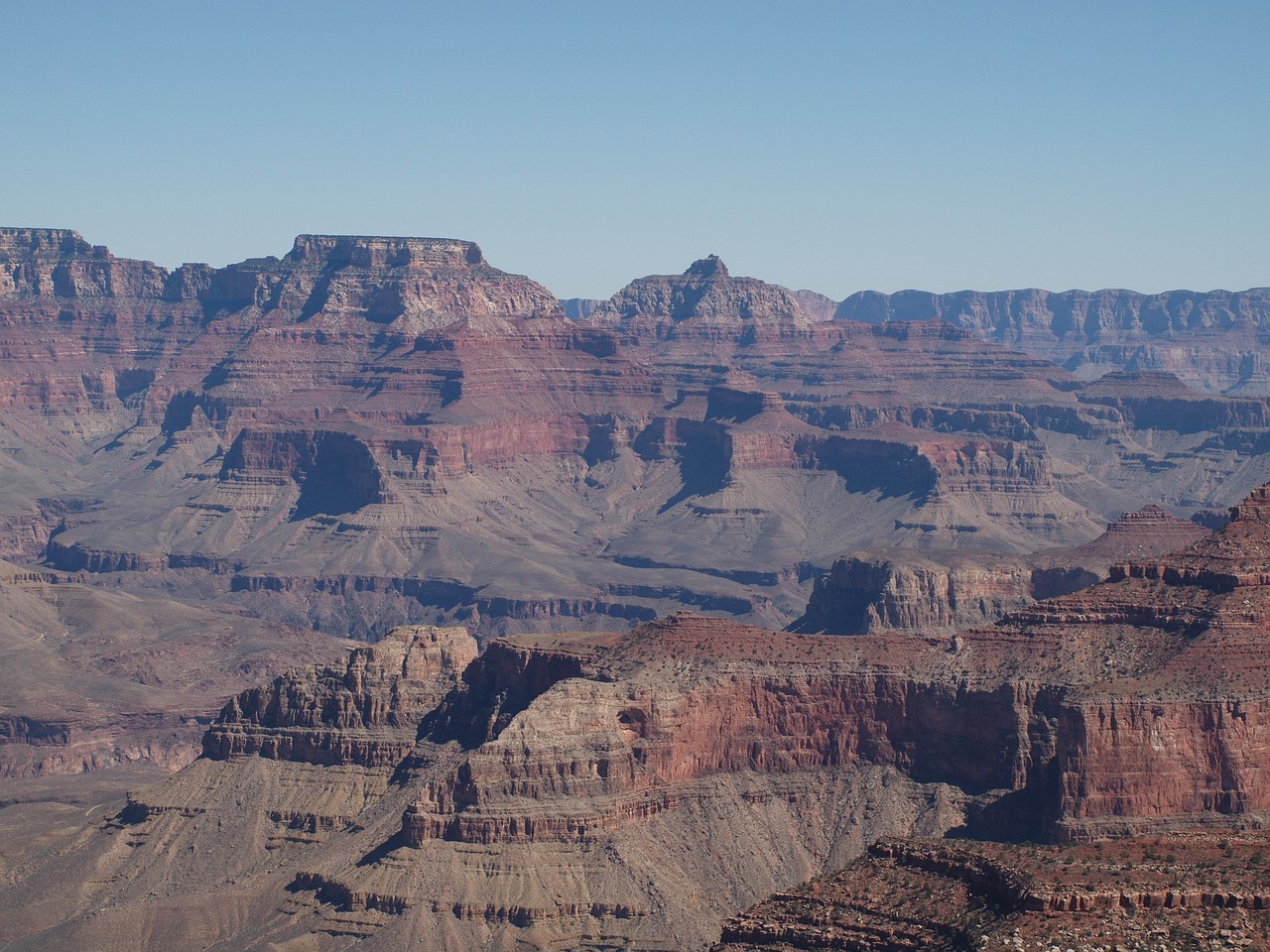
Best Time to Visit
Explore essential information and tips for an unforgettable backpacking experience in the majestic Grand Canyon.
Learn about permits, trail options, weather considerations, and gear essentials for a successful backpacking adventure.
Discover the optimal seasons for backpacking in the Grand Canyon to avoid extreme temperatures and enjoy stunning views.
Experience mild weather, blooming flora, and fewer crowds during these ideal seasons for backpacking in the Grand Canyon.
Prepare for scorching temperatures and crowded trails while taking advantage of longer daylight hours for extended hikes in the canyon.
Explore popular backpacking routes like the Bright Angel Trail, South Kaibab Trail, and the challenging Rim-to-Rim trek for varying experiences.
Understand crucial safety measures, including hydration, wildlife awareness, navigation, and emergency protocols for a safe backpacking trip.
Stay hydrated and fueled with tips on water sources, electrolyte balance, and lightweight, nutrient-dense trail snacks for sustained energy.
Learn how to coexist with wildlife, such as rattlesnakes and scorpions, and minimize risks through proper food storage and campsite selection.
When planning your backpacking adventure in the Grand Canyon, the best time to visit largely depends on your preferences and tolerance for weather conditions. Spring and fall are generally considered the optimal seasons for backpacking in the Grand Canyon. During these times, you can expect mild temperatures, blooming wildflowers, and fewer crowds compared to the peak summer months. The pleasant weather allows for comfortable hiking and stunning views of the canyon without the extreme heat that summer brings.
On the other hand, summer in the Grand Canyon can be challenging due to scorching temperatures that can soar above 100°F (37.8°C). While the longer daylight hours provide more time for exploration, it's essential to be prepared for the heat and crowded trails. If you choose to backpack in the summer, ensure you have adequate sun protection, carry plenty of water, and plan your hikes during the cooler parts of the day to avoid heat-related issues.
Winter in the Grand Canyon can also offer a unique backpacking experience, with cooler temperatures and potential snowfall at higher elevations. While winter backpacking requires additional gear and preparation for cold conditions, it can reward you with quieter trails and a different perspective of the canyon's beauty under a dusting of snow.
Ultimately, the best time to visit the Grand Canyon for backpacking is subjective and depends on your preferences for weather, crowd levels, and the type of experience you seek. Whether you prefer the mild seasons of spring and fall or the challenges of summer and winter, each time of year offers its own rewards for those seeking adventure in this natural wonder.
Stay tuned for answers to common queries about backpacking in the Grand Canyon!
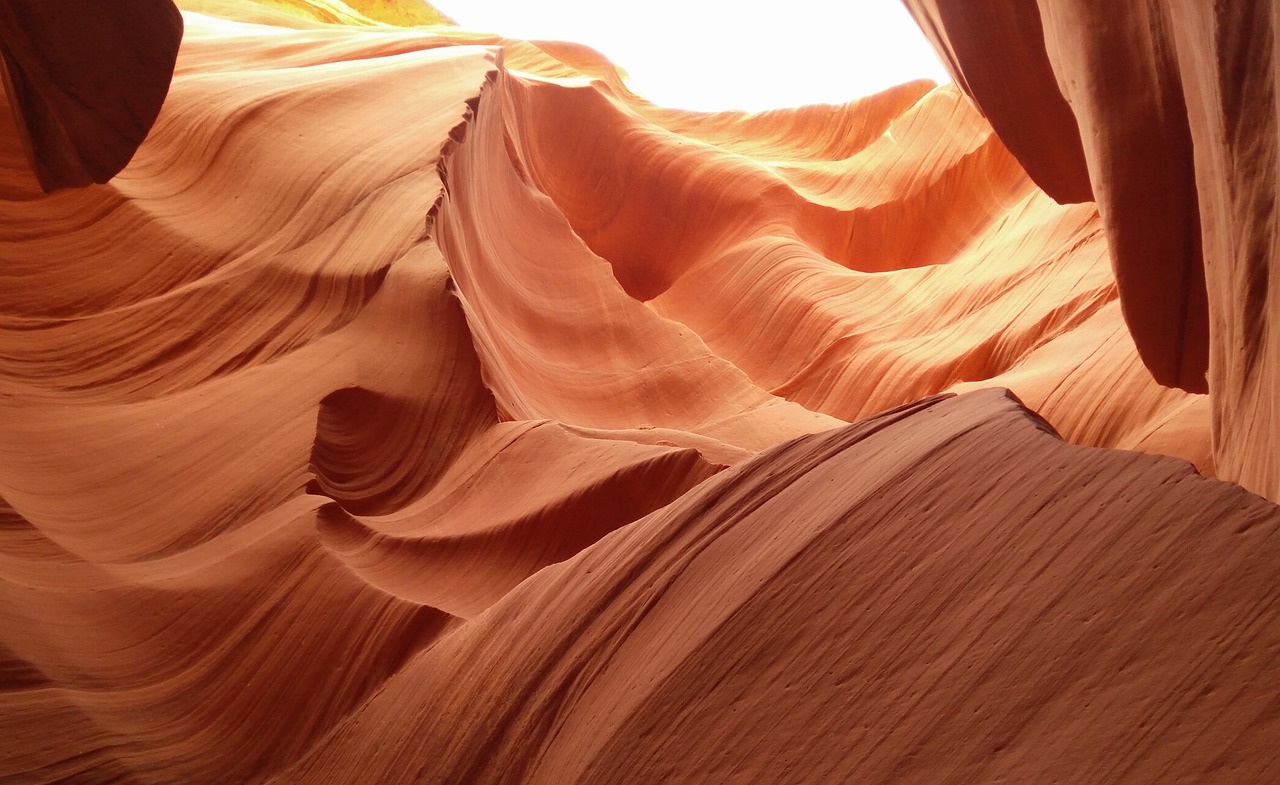
Spring and Fall
Spring and Fall are the prime seasons for embarking on a backpacking journey through the Grand Canyon. During these transitional periods, nature awakens from its winter slumber, painting the canyon with vibrant hues of green and blossoming flowers. The weather is mild and pleasant, offering hikers comfortable temperatures for exploration without the scorching heat of summer or the chilly winds of winter.
Imagine setting foot on the trail during spring, greeted by the delicate fragrance of wildflowers in bloom and the gentle rustling of leaves as you traverse the canyon's diverse terrain. The fall season, on the other hand, treats backpackers to a spectacle of changing colors as the foliage transforms into a mesmerizing tapestry of reds, oranges, and yellows.
Spring and Fall provide a serene backdrop for your backpacking adventure, allowing you to immerse yourself in the tranquility of nature while avoiding the peak tourist crowds that flock to the Grand Canyon during the summer months. Whether you seek solitude in the vast wilderness or crave the company of like-minded explorers, these seasons offer the perfect balance of solitude and camaraderie.
**Frequently Asked Questions:** 1. **Do I need a permit to backpack in the Grand Canyon?** - Yes, a backcountry permit is required for all overnight backpacking trips within the Grand Canyon. Permits can be obtained through the National Park Service in advance of your trip. 2. **What should I do in case of a wildlife encounter?** - If you encounter wildlife such as rattlesnakes or scorpions, maintain a safe distance and do not provoke the animals. Store food securely to prevent attracting wildlife to your campsite. 3. **Are there water sources along the backpacking trails?** - While some trails have water refill stations, it's crucial to carry an adequate supply of water as sources may be limited or unreliable. Treat all water obtained from natural sources before consuming. 4. **What gear is essential for a backpacking trip in the Grand Canyon?** - Essential gear includes a sturdy backpack, lightweight tent, sleeping bag, cooking supplies, proper footwear, navigation tools, and adequate clothing layers for varying weather conditions. 5. **Can I hike in the Grand Canyon year-round?** - While hiking is possible year-round, it's important to consider weather conditions and trail accessibility. Spring and Fall are generally the best seasons for backpacking due to milder temperatures and fewer crowds. 6. **What emergency protocols should I follow during a backpacking trip?** - In case of an emergency, stay calm and assess the situation. Signal for help using a whistle or mirror, and if necessary, activate your emergency beacon. Familiarize yourself with the designated emergency contact points along the trails.
Summer
Summer in the Grand Canyon is a time of contrasts and challenges for backpackers. The scorching temperatures can test even the most experienced hikers, making it essential to plan and prepare meticulously for your adventure. While the heat may be intense, the longer daylight hours offer opportunities for extended hikes and exploration of this natural wonder.
When venturing into the Grand Canyon during the summer months, it is crucial to prioritize hydration above all else. The desert heat can quickly lead to dehydration, so carrying an ample water supply and replenishing fluids regularly is non-negotiable. Additionally, incorporating electrolyte-rich drinks and snacks into your pack can help maintain your body's balance and energy levels under the relentless sun.
Despite the challenges posed by the summer heat, the Grand Canyon's trails can still be crowded with fellow adventurers. It's essential to practice trail etiquette, be patient, and respect others sharing the path. Embracing a spirit of camaraderie with your fellow hikers can enhance the overall experience and create lasting memories of your journey through this awe-inspiring landscape.
As you navigate the canyon's trails during the summer, keep a keen eye out for wildlife encounters. Rattlesnakes and scorpions are more active in the warmer months, so being aware of your surroundings and taking precautions when setting up camp or resting can help minimize risks. Proper food storage and campsite selection are key elements in coexisting harmoniously with the diverse wildlife that calls the Grand Canyon home.
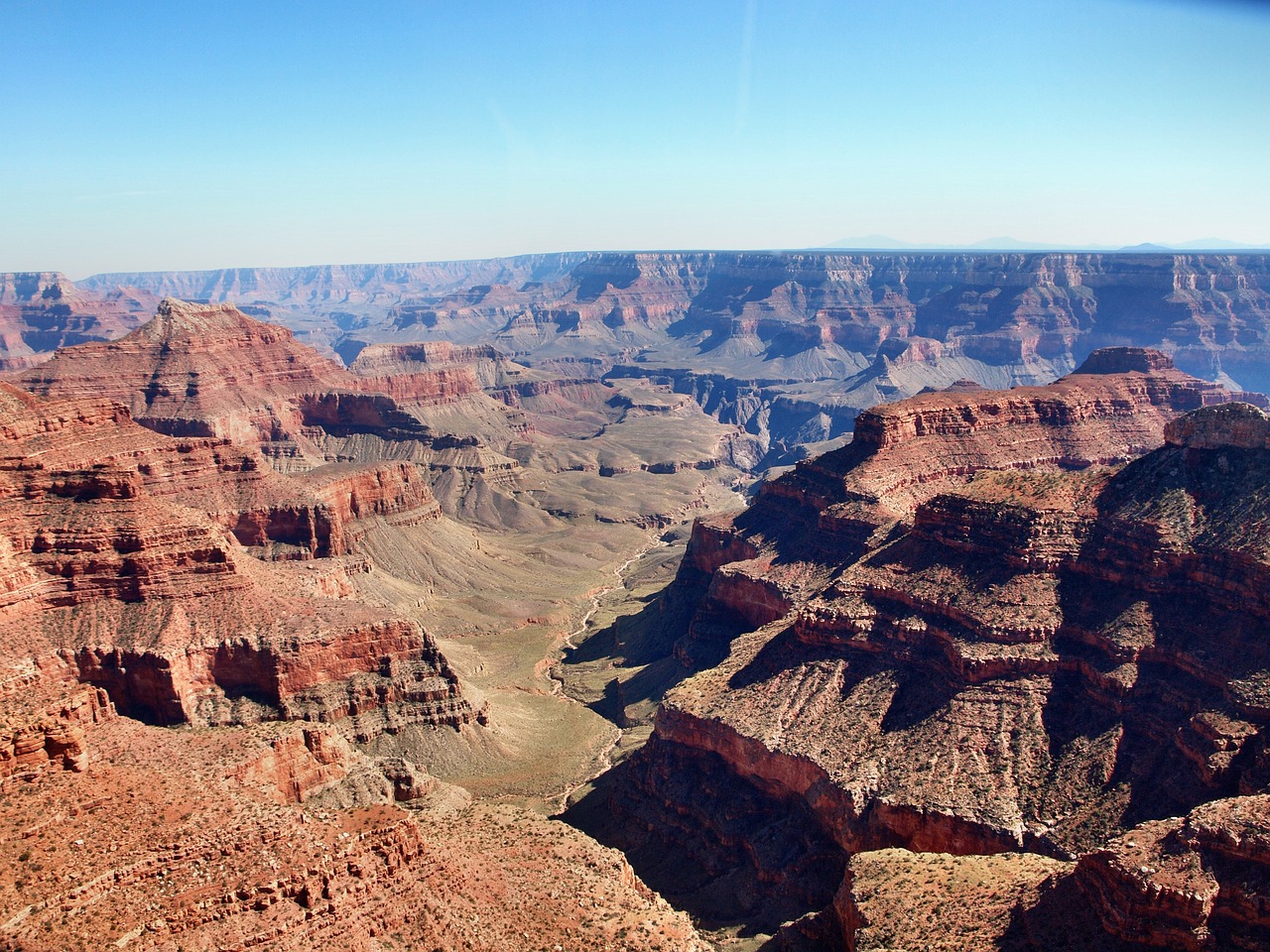
Trail Options
Explore essential information and tips for an unforgettable backpacking experience in the majestic Grand Canyon.
When it comes to backpacking in the Grand Canyon, the trail options are as diverse as the breathtaking views you'll encounter along the way. Each trail offers a unique experience, from leisurely hikes to challenging treks that test your endurance and skills.
The Bright Angel Trail is a popular choice for backpackers, known for its well-maintained path and access to water at Indian Garden. This trail provides stunning views of the canyon and is a great option for those looking for a moderate backpacking experience.
For a more adventurous journey, consider the South Kaibab Trail, which offers unparalleled panoramic vistas of the canyon. While this trail is more strenuous and lacks water sources, the sweeping views make it a favorite among experienced hikers seeking a challenge.
If you're up for the ultimate backpacking adventure, the Rim-to-Rim trek is an iconic route that takes you from one side of the canyon to the other. This demanding trail requires careful planning and preparation but rewards you with unmatched scenery and a true sense of accomplishment.
Before embarking on any trail, be sure to research the difficulty level, water availability, and necessary permits to ensure a safe and enjoyable backpacking experience in the Grand Canyon.
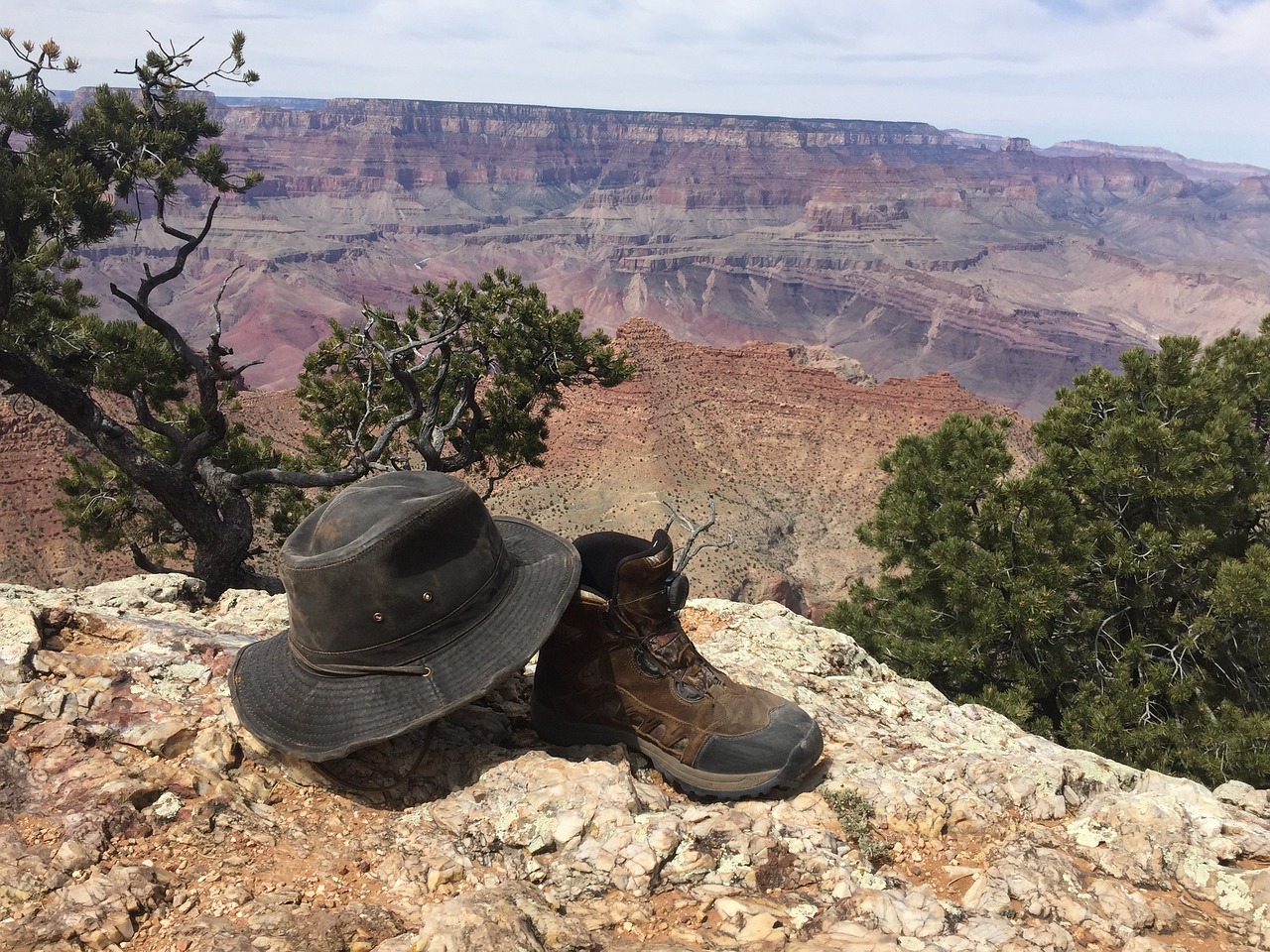
Safety Tips
Safety is paramount when embarking on a backpacking journey through the Grand Canyon. One of the most crucial safety tips is to always carry an ample water supply. The desert climate of the canyon can quickly dehydrate hikers, especially during the scorching summer months. It's essential to drink water regularly and refill whenever possible to prevent heat-related illnesses.
Another important safety consideration is wildlife awareness. While exploring the Grand Canyon, hikers may encounter various creatures, including rattlesnakes and scorpions. To minimize the risk of negative interactions, it's vital to keep a safe distance from wildlife, avoid feeding them, and properly store food to prevent attracting animals to campsites.
Navigation skills are also key to a safe backpacking trip in the Grand Canyon. The vast and rugged terrain can be disorienting, making it easy to get lost. Carrying a detailed map, compass, and GPS device can help hikers stay on course and navigate the trails effectively. Additionally, familiarizing oneself with trail markers and landmarks along the route is essential for staying on track.
Emergency preparedness is a fundamental aspect of backpacking safety. Before setting out on a journey, hikers should inform someone reliable about their itinerary and expected return time. Carrying essential emergency supplies such as a first aid kit, emergency shelter, and signaling devices can be lifesaving in unforeseen situations. Knowing how to respond to emergencies, including injuries, extreme weather, or getting lost, is crucial for ensuring a safe and successful backpacking experience in the Grand Canyon.
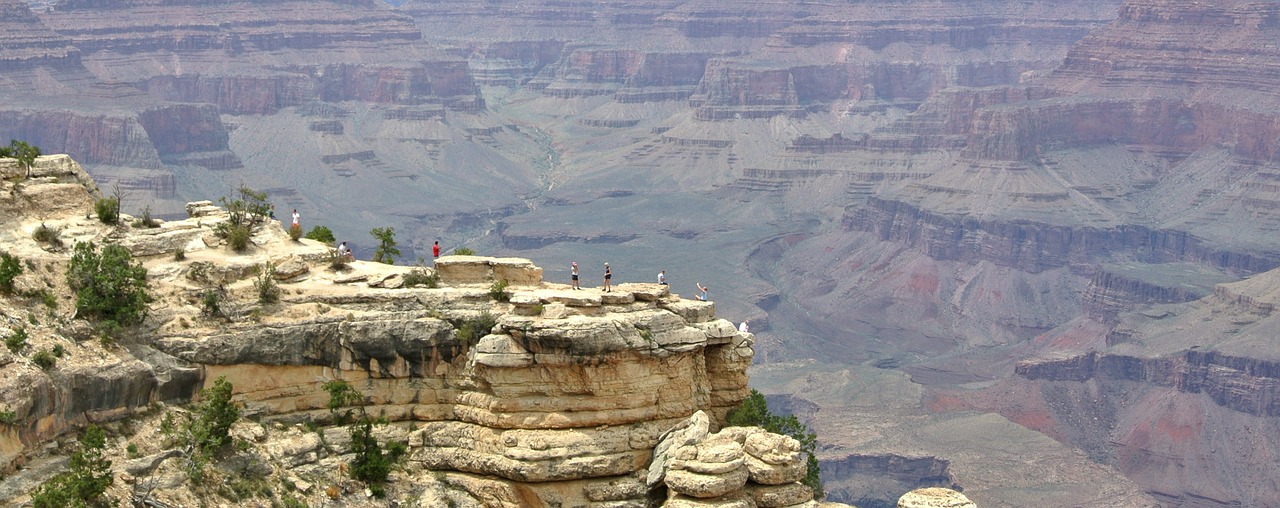
Hydration and Nutrition
When embarking on a backpacking journey through the Grand Canyon, ensuring proper hydration and nutrition is key to a successful and safe adventure. The arid desert climate and strenuous hiking trails demand careful attention to maintaining your body's water and nutrient levels.
One of the primary concerns while backpacking in the Grand Canyon is staying hydrated. With limited water sources along the trails, it's essential to carry an adequate supply of water and replenish whenever possible. Consider using a hydration pack or water bottles with built-in filters to ensure access to clean water throughout your hike. Maintaining electrolyte balance is also crucial, especially in the scorching heat of the canyon. Pack electrolyte tablets or powders to replenish essential minerals lost through sweating.
In addition to hydration, proper nutrition plays a vital role in sustaining your energy levels during long hikes. Opt for lightweight, nutrient-dense snacks that are easy to carry and provide a quick energy boost. Trail mix, energy bars, dried fruits, and nuts are excellent choices for fueling your body on the go. Plan your meals to include a balance of carbohydrates, protein, and healthy fats to support your muscles and keep you feeling full and energized throughout the day.
When setting up camp for the night, ensure proper food storage to prevent wildlife encounters. Keep food items securely sealed in bear-proof containers or hung from designated food storage poles to deter curious animals from approaching your campsite. Avoid eating inside your tent and clean up any food scraps to minimize the risk of attracting unwanted wildlife visitors.
By prioritizing hydration and nutrition during your backpacking trip in the Grand Canyon, you'll not only enhance your overall experience but also ensure your well-being in the rugged wilderness. Remember, staying properly hydrated and nourished is the key to conquering the challenging terrain and enjoying the breathtaking beauty of one of the world's most iconic natural wonders.

Wildlife Encounters
When embarking on a backpacking adventure in the Grand Canyon, encountering wildlife is an inevitable part of the experience. From majestic birds soaring overhead to elusive desert creatures, the canyon is teeming with diverse animal life waiting to be discovered. However, it's essential to approach these encounters with caution and respect to ensure both your safety and the well-being of the wildlife.
One of the most important aspects of wildlife encounters in the Grand Canyon is understanding the importance of proper food storage. Animals such as squirrels, ravens, and even larger mammals like raccoons are adept at scavenging for food left unattended. To prevent unwanted animal interactions, always store your food securely in bear-proof containers or hang them from designated food storage poles. By keeping a clean campsite and properly storing your food, you can minimize the risk of attracting wildlife to your backpacking area.
Additionally, when hiking or camping in the Grand Canyon, it's crucial to be mindful of your surroundings and respect the natural habitat of the wildlife. Avoid feeding any animals you encounter, as this can disrupt their natural behaviors and lead to dependency on human food sources. Remember that these creatures are wild and should be observed from a safe distance to prevent any potential conflicts.
Furthermore, familiarize yourself with the common wildlife species found in the Grand Canyon, including rattlesnakes and scorpions. While these creatures may seem intimidating, they play vital roles in the canyon's ecosystem. By learning how to identify and react to encounters with potentially dangerous wildlife, you can navigate the trails with confidence and appreciation for the natural world around you.
Overall, wildlife encounters in the Grand Canyon offer a unique opportunity to connect with nature and witness the beauty of the canyon's inhabitants. By following proper wildlife etiquette, practicing Leave No Trace principles, and staying informed about local wildlife species, you can ensure a safe and memorable backpacking experience while respecting the delicate balance of the canyon's ecosystem.
Frequently Asked Questions
- Do I need a permit to backpack in the Grand Canyon?
Yes, a backcountry permit is required for all overnight backpacking trips in the Grand Canyon. Permits help manage the number of visitors and ensure a safe experience. Make sure to apply for your permit well in advance to secure your desired dates.
- What gear is essential for backpacking in the Grand Canyon?
Essential gear for backpacking in the Grand Canyon includes a sturdy backpack, comfortable hiking boots, plenty of water, lightweight and nutritious food, a reliable map and compass, proper clothing layers, a first aid kit, and a quality tent and sleeping bag.
- Are there water sources along the backpacking trails?
While some trails have water stations, it's crucial to carry an ample water supply with you. Water availability can vary, so it's best to check with the park service for the most up-to-date information on water sources along your chosen trail.
- How can I stay safe from wildlife encounters?
To stay safe from wildlife encounters, make noise while hiking to alert animals of your presence, store food properly to avoid attracting wildlife to your campsite, and never approach or feed wild animals. Be aware of your surroundings and follow park guidelines for wildlife safety.
- What should I do in case of an emergency while backpacking?
If you encounter an emergency situation while backpacking in the Grand Canyon, stay calm and assess the situation. Use any available communication devices to call for help, such as a satellite phone or whistle. If needed, seek assistance from fellow hikers or park rangers by following established emergency protocols.



